News
The History of the Patek Philippe Nautilus
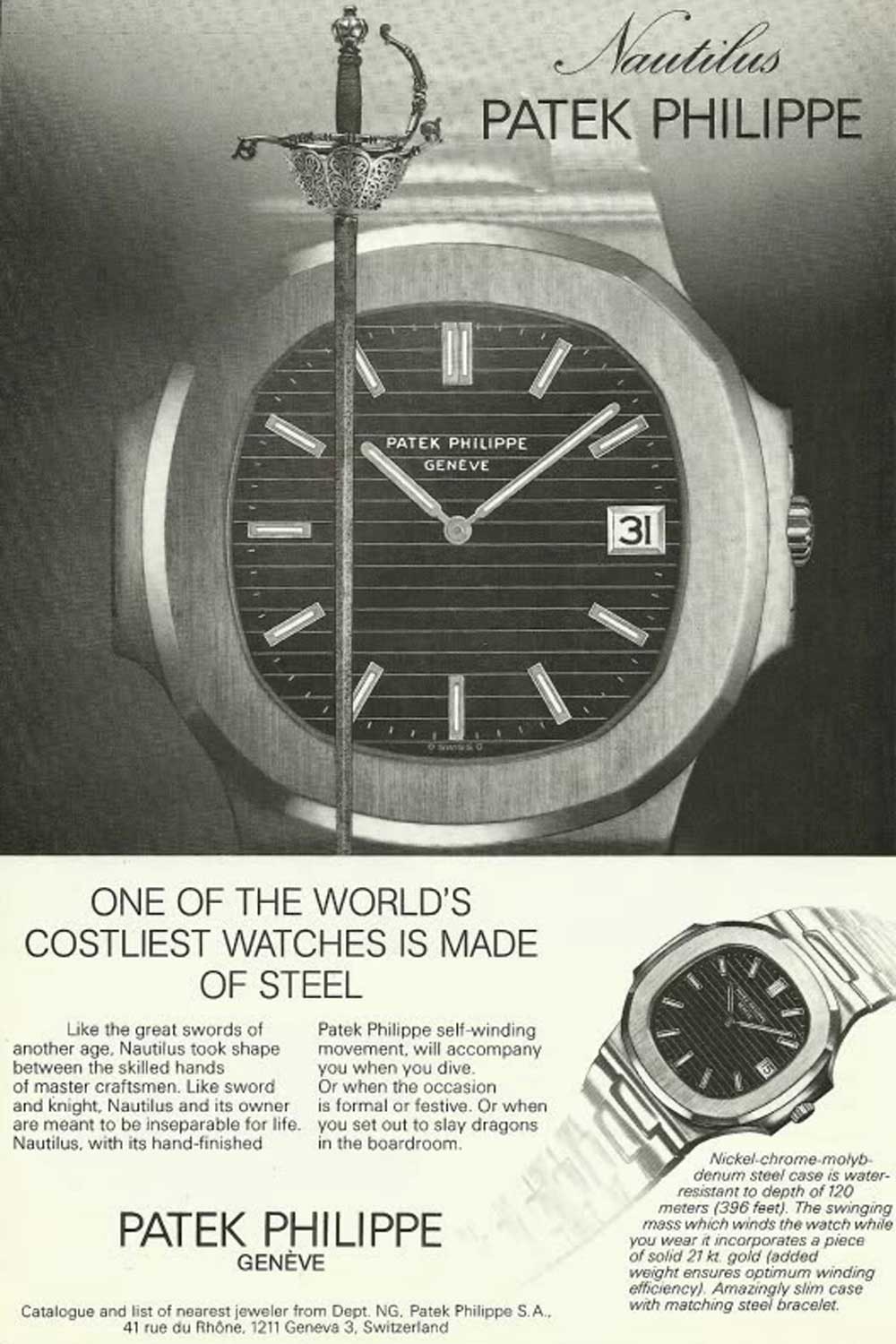
An old ad for Patek Philippe Nautilus ref. 3700
Unbending and unapologetically industrial, the Nautilus committed so thoroughly to the new vision of modern luxury in its size, shape, material, robustness and most of all, price tag that it worked. In fact, Patek Philippe advertisements of the era boasted that one of the most expensive watches in the world was made of steel. By its 40th birthday in 2016, demand for the Nautilus had already grown strong. From there, temperatures rose steadily, inspiring innumerable derivatives and pastiches in the market while waitlist stretched to nearly a decade. Finally, the brand announced the retirement of the steel Ref. 5711 last year, which sent prices spiralling into madness on the secondary market.
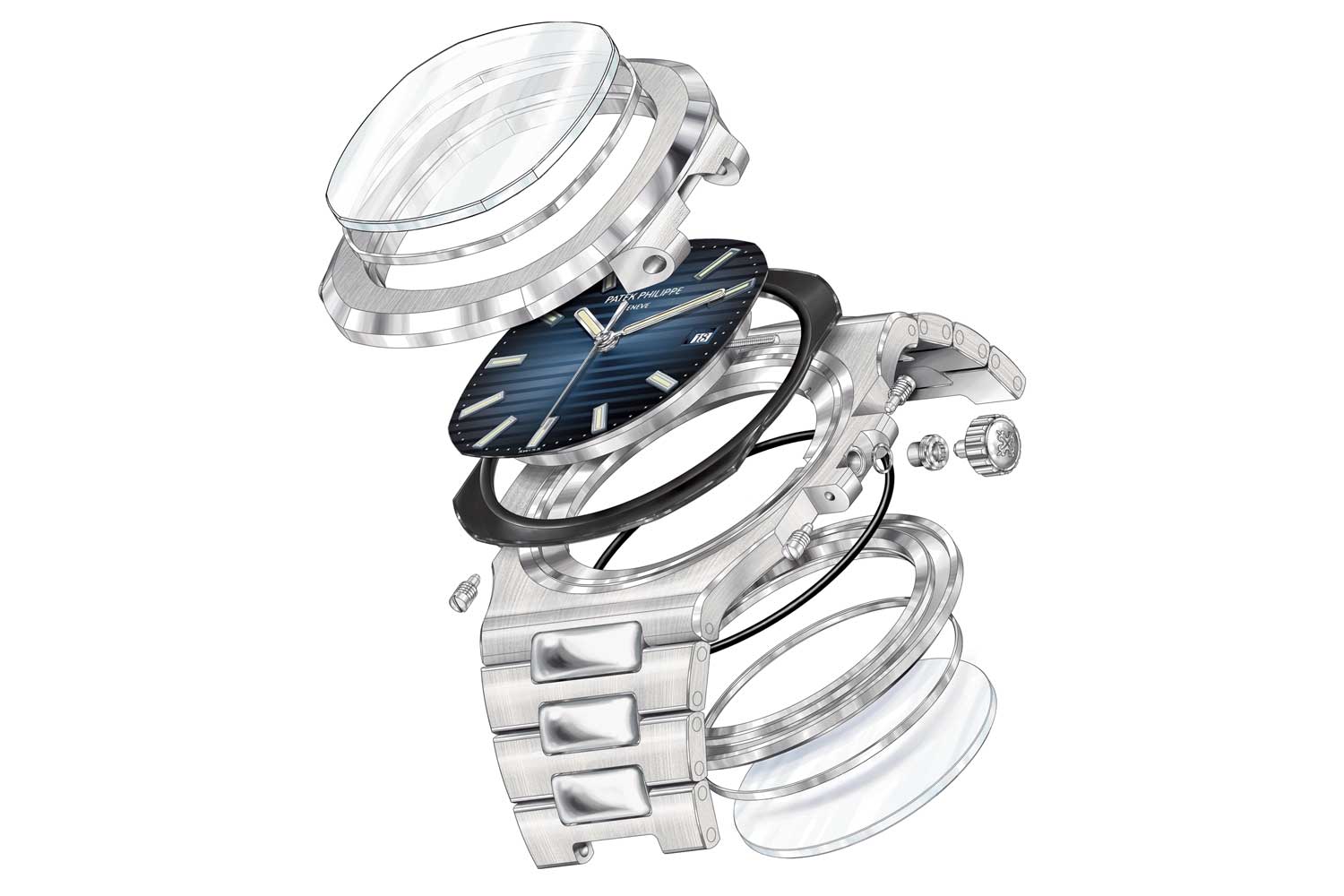
Design of Patek Philippe Nautilus Ref. 5711
The First of its Kind: Ref. 3700 “Jumbo” (1976-1990)
The Nautilus of 1976 was the ref. 3700/1A with hours, minutes and a date at three o’clock, fondly known as the “Jumbo” due to its generous case diameter of 40mm (42mm ear to ear). Its inspired design, as with the Royal Oak, was the brainchild of the late Gérald Genta, who famously sketched its blueprint in five minutes while dining metres away from a table of Patek Philippe executives. Whereas the eight-sided octagonal bezel of the Royal Oak was modelled after deep-sea dive helmets, the rounded octagonal shape of the Nautilus drew inspiration from the hermetically sealed portholes on transatlantic ocean liners.
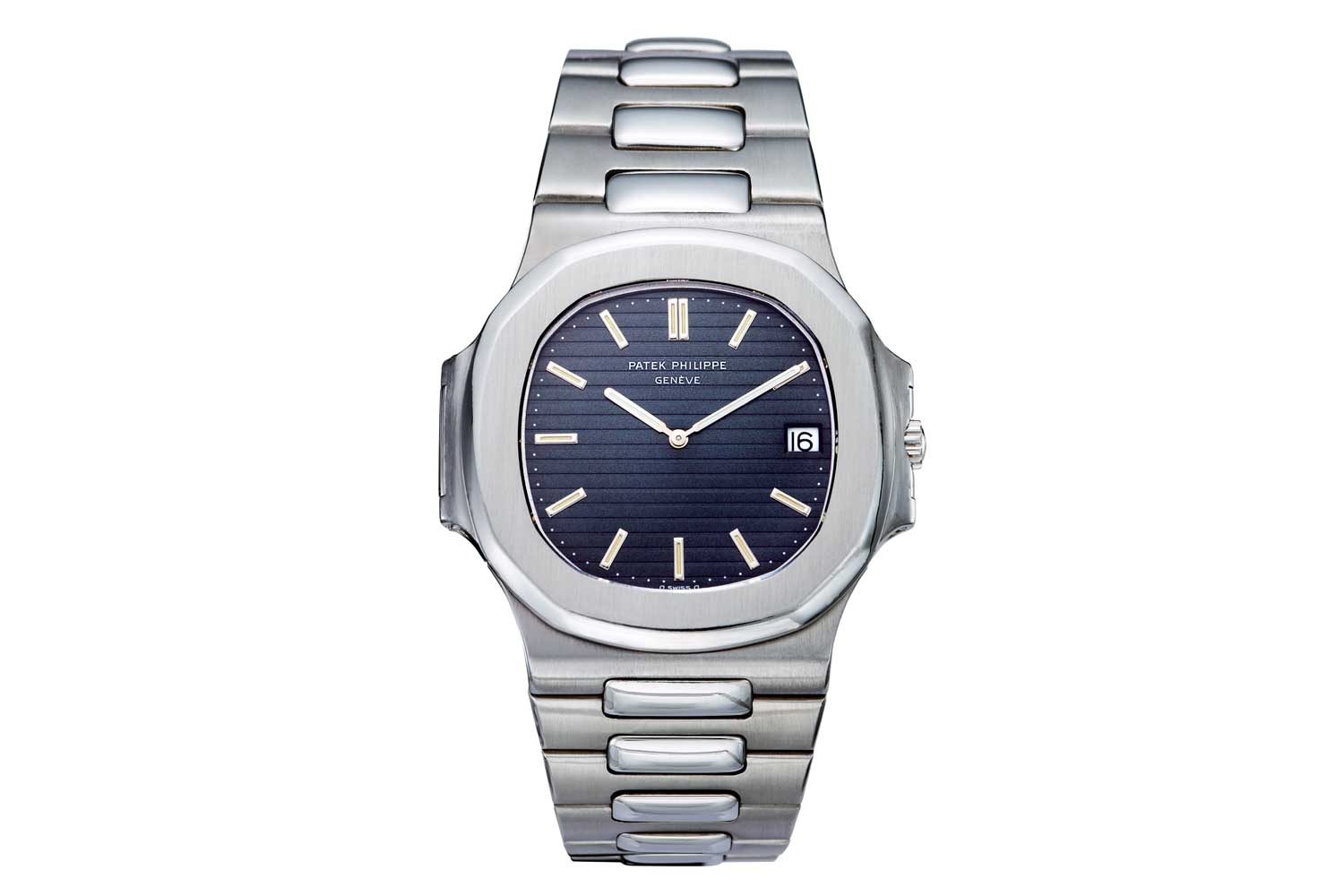
Patek Philippe Nautilus Ref. 3700/1A, 1976
In contrast to its famous contemporary, the Ref. 3700/1A had a two-part case construction so as to reduce the risk of water entry, accomplishing a depth rating of 120m. It comprised of a case middle/back and a bezel with two lateral protrusions or “ears”. Both parts are secured by four lateral screws, concealed at the “ears” at three and nine o’clock, with a bezel gasket in between.
Despite its imposing size, the Jumbo had an elegant height of just 7.5mm thanks to the ultra-thin calibre 28-255C inside, which is the Jaeger-LeCoultre cal. 920 that also powered the Royal Oak. Because of its monobloc case, the movement had a split stem so that it could be inserted and removed through the dial side. It was equipped with a Gyromax balance and offered a power reserve of 40 hours.
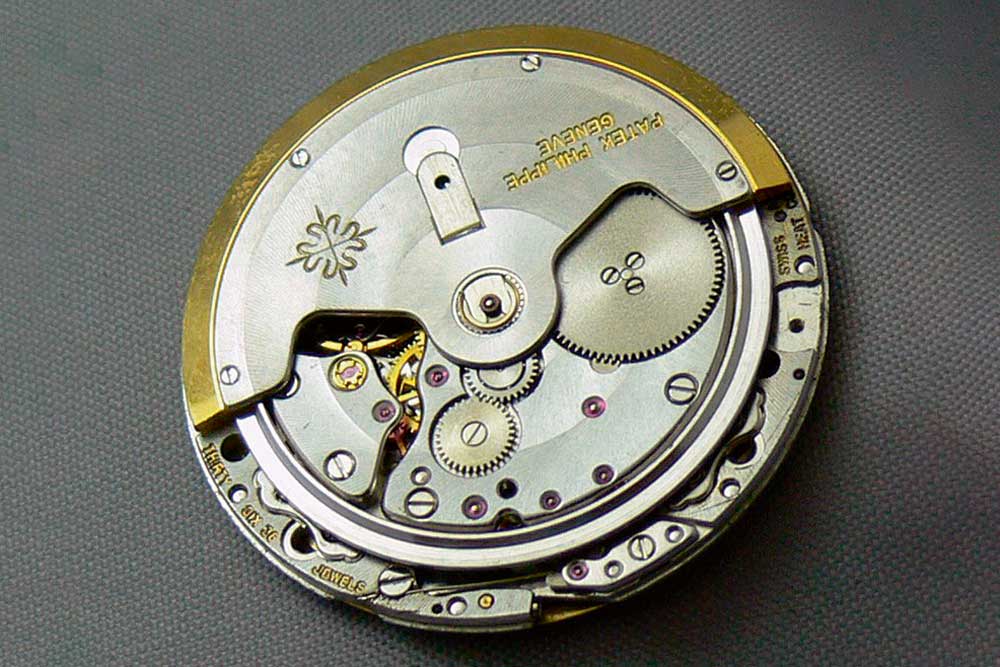
The beautiful Patek calibre 28-255 was found in the original 3700/1A from 1976. (Image: A Collected Man)
The blue dial was embossed with a distinctive ribbed texture, achieved by carving each individual horizontal groove by hand. Across the reference, the dials themselves also demonstrated an evolution with earlier examples featuring small painted baton minute track while later examples had a dotted outer minute track with “sigma SWISS sigma” printed at the bottom of the dial.
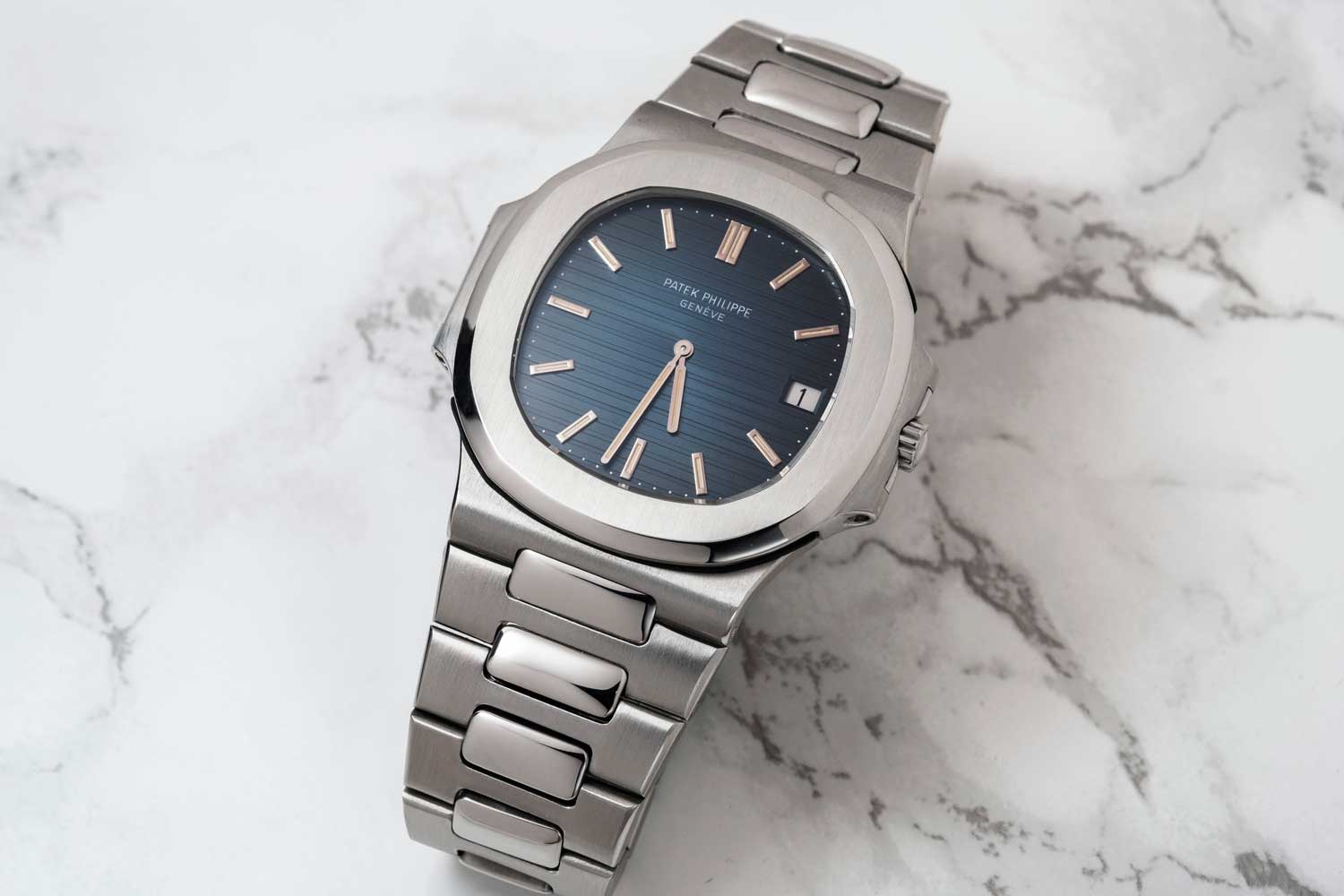
Patek Philippe Nautilus ref. 3700/1A (Image © Revolution)
The first platinum example with diamond markers sold for CHF 783,750 at Christies in 2013 while the second with a pave diamond-set dial and bezel sold for CHF845,000 in 2015. A steel example with a prototype case and a one-off white-dial made by Stern Frères on special request by the owner has also surfaced. Affectionately referred to as the “Albino”, the watch, which also included a spare black dial as part of the package, sold for CHF 250,000 at Sotheby’s in 2015. Limited quantities of double-signed watches were also produced for its retailers including Tiffany & Co., Beyer, Gübelin and the elusive Asprey as well as for the Sultan of Oman, featuring the distinctive Omani national emblem of a khanjar.
The last transacted prices for a classic steel ref. 3700/1 with a blue ribbed dial was CHF 176,400 at Phillips Geneva sale in May 2022 and EUR 113,400, approximately CHF 108,100, at Sotheby’s in September 2022.
The Midsize Nautilus: Ref. 3800 (1981-2006)
Due to the Jumbo’s rather slow initial sales, Patek Philippe introduced the midsize ref. 3800 in 1981 in a bid to broaden its appeal. The ref. 3800 saw a reduction in case diameter to a more modest 37.5mm while preserving the design and construction of the ref. 3700. Crucially, the ref. 3800 was powered by an in-house movement that was built to modern standards with a center seconds, bringing more utility to the Nautilus.
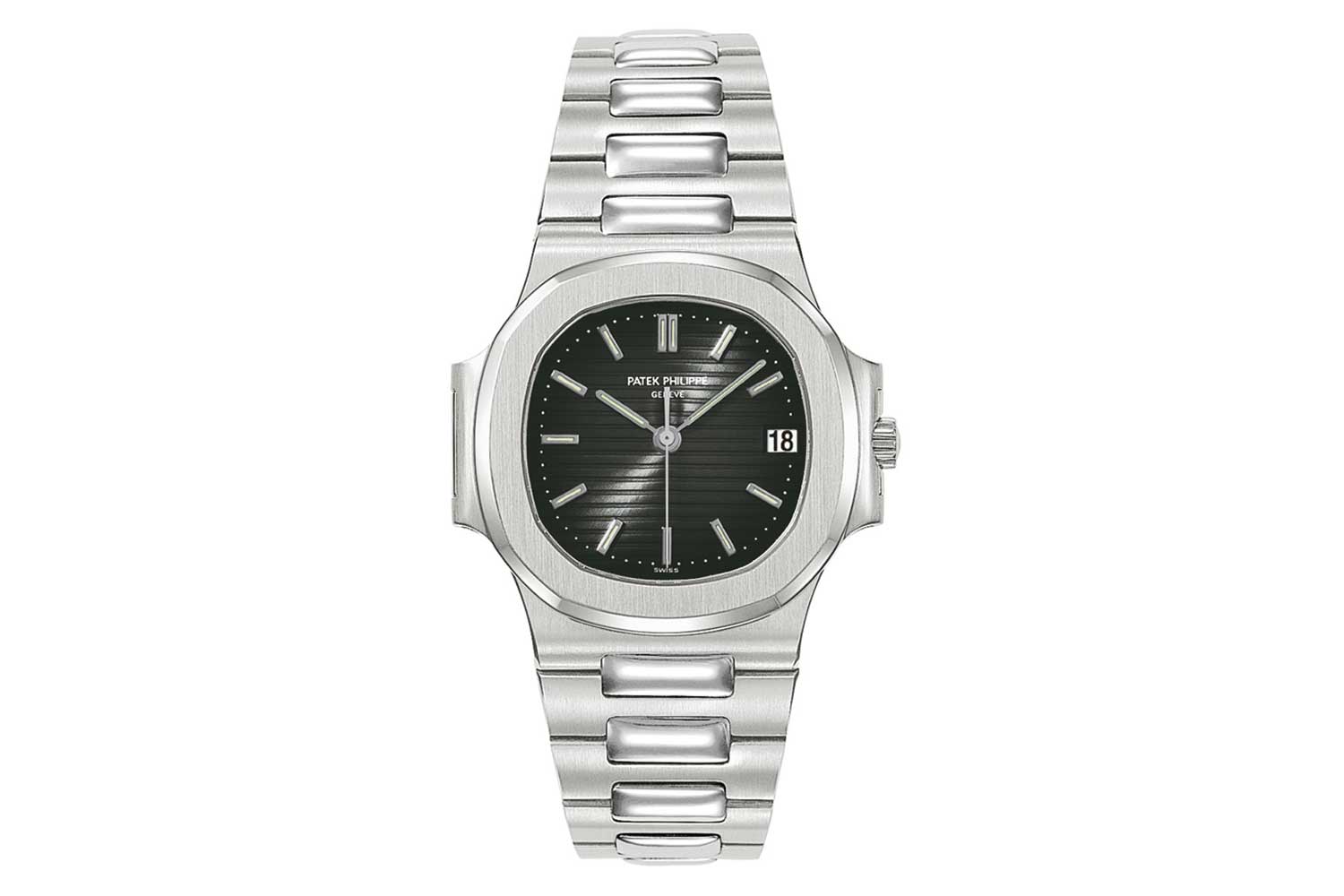
Patek Philippe Nautilus Ref. 3800/1A, 1981
The caliber 330 SC also established an architecture that would persist through to the modern-day 324 SC and subsequent 26-330 SC. To achieve a central seconds while retaining a slim height, the third wheel in the movement drives a pinion in the middle for the central seconds with both the second and fourth wheels located off-centred to free up space in the middle to accommodate the automatic winding mechanism. Meanwhile, the third wheel also drives the minute wheel in the motion works on the dial side.
The ref. 3800 was produced in a greater variety of configurations across all metals, which included rose gold, as an attempt to bring the Nautilus to a wider audience. While only a prototype ref. 3700 is known to have a white dial, the white striated dial became a permanent part of the ref. 3800 offering in steel, along with classic dark blue with baton indexes, smooth charcoal grey dial with Arabic numerals as well as black with Roman numerals.
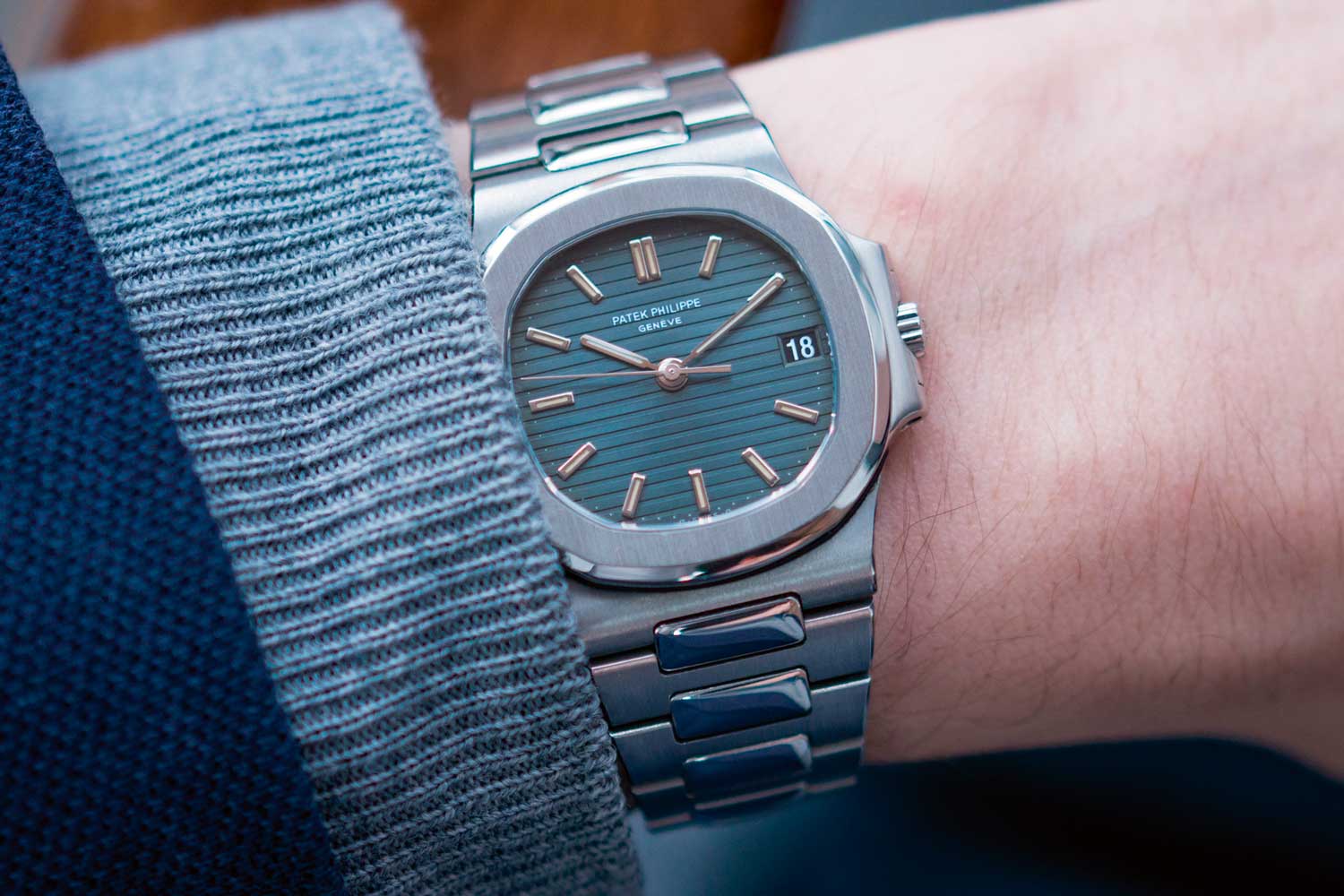
The mid-sized Nautilus 3800/1A launched in 1981 with a new in-house movement, marking the end of the calibre 28-255. (Image: A Collected Man)
A Tiffany-signed example with a black dial and roman numerals sold for USD 113,400 at Sotheby’s in December 2021 while the standard-production steel model with a classic blue ribbed dial last transacted at HKD 504,000, approximately CHF 63,300, at Sotheby’s on 5th October 2022.
The Forerunner of the Aquanaut: Ref. 5060/SJ (1996-1997)
The introduction of a smooth black dial with Roman numerals on the bi-metal ref.3800/1JA in 1996 simultaneously saw the birth of the ref. 5060/SJ, which marked Patek’s first attempt at reinterpreting the design of the Nautilus. It preceded the Aquanaut ref. 5060A by a year and can be considered a transitional model. It featured a redesigned porthole case and traditional lugs that would come to define the Aquanaut but retained a case of precious metal, and like the ref.3800/1JA, featured Roman numerals on a matte black dial. It saw a further reduction in diameter to 35mm and was fitted with neither a bracelet nor a rubber strap but instead, a leather strap, which is interesting as it suggests a momentary attempt to hew to the prevalent norms that the Nautilus broke away from. It was equipped with the same caliber 330 S C and was executed only in yellow gold with a black as well as a white dial before the birth of the Aquanaut, with its 36mm porthole steel case, checkerboard dial and rubber strap.
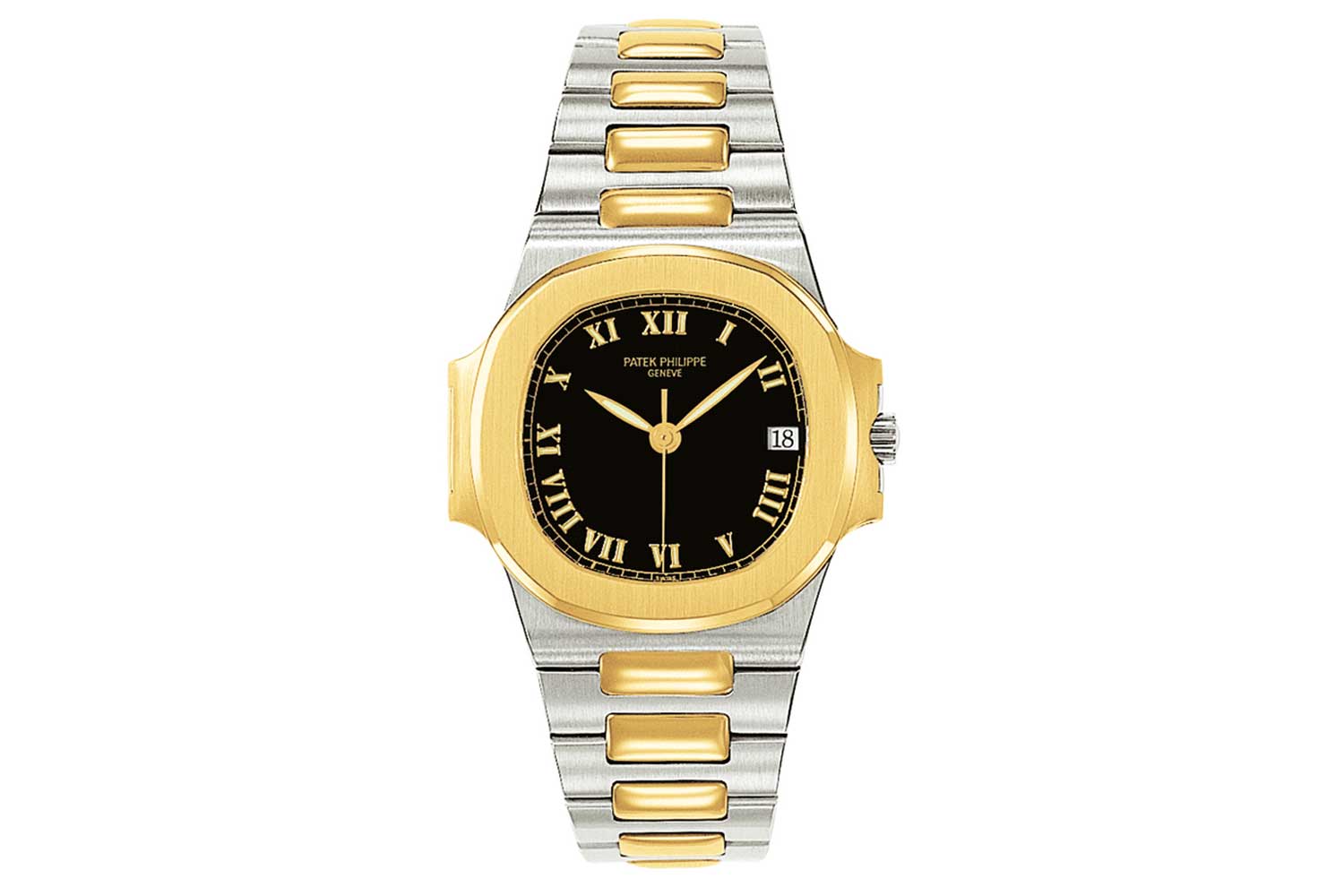
Patek Philippe Nautilus Ref. 3800/1JA, 1996
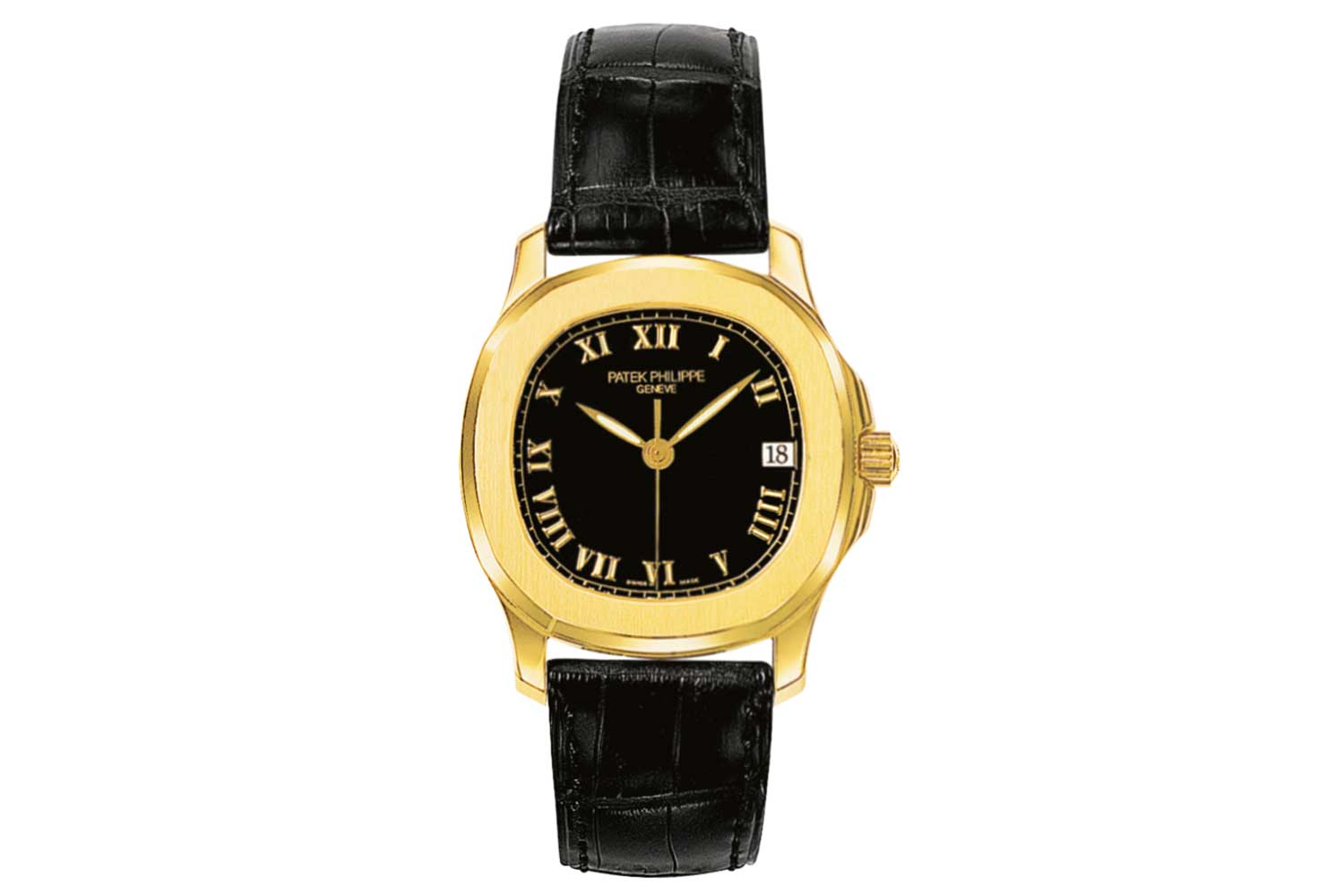
Patek Philippe Nautilus Ref. 5060/SJ, 1996
The Nautilus Power Reserve: Ref. 3710 (1998-2006)
As the midsize ref. 3800 entered its seventeenth year of production, Patek Philippe introduced the stainless-steel ref. 3710 in 1998, the first Nautilus to feature an additional complication in addition to the date. The watch marked a return to the original Jumbo case size of 42mm and incorporated a power reserve indicator at 12 o’clock. The movement is the 330 S C IZR, which stands for Indication de Zone de Remontage. The indicator comprises of a metallic graduated scale that rotates as the watch is being wound and a pointer that rotates as power is discharged. The steel case was combined with a matte black dial that saw the continuation of applied Roman numerals and a railroad minute track.
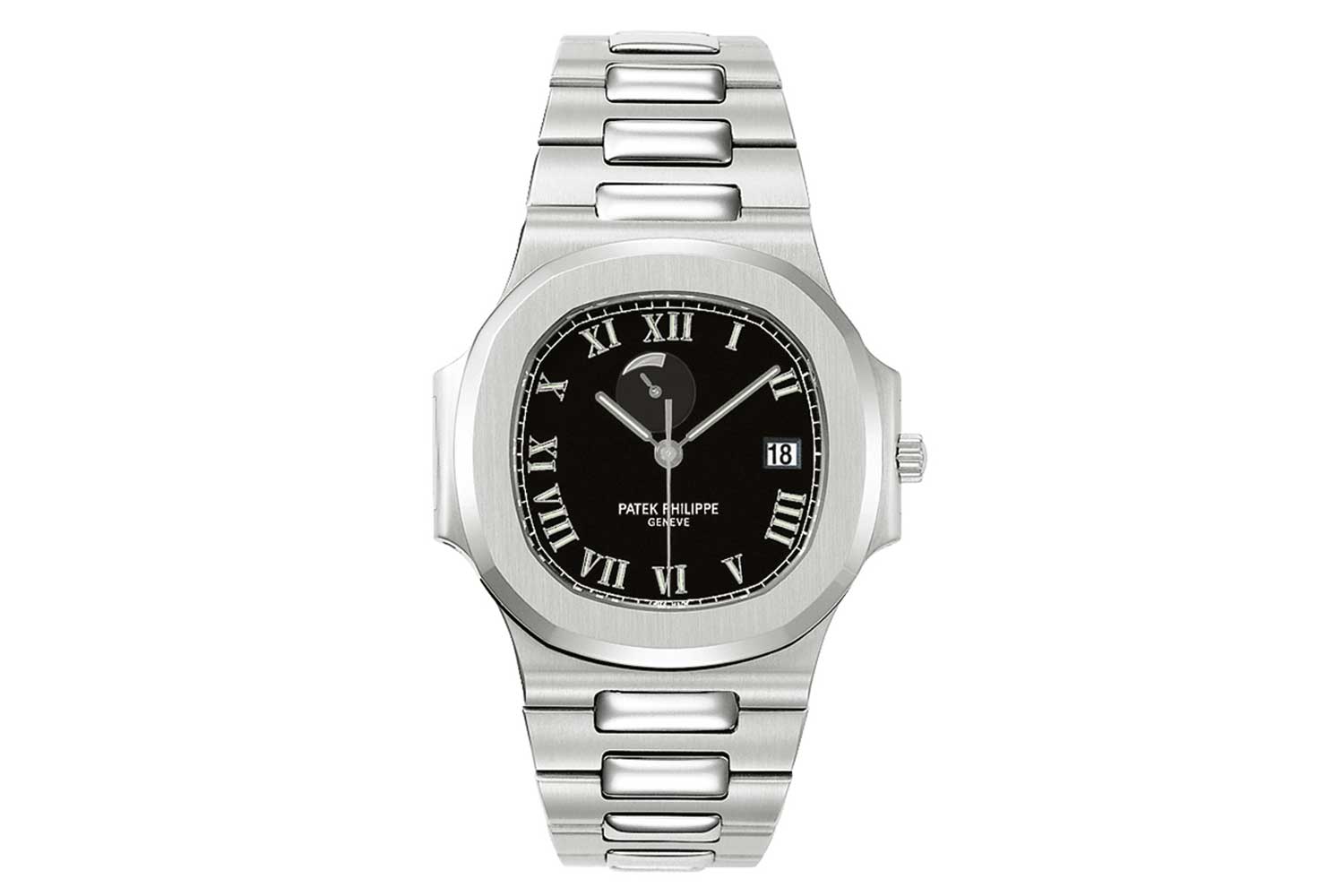
Patek Philippe Nautilus Ref. 3710/1A, 1998
The Transitional Models: Ref. 3711/1G (2004) and Ref. 3712/1A (2005)
Six years after the launch of the Nautilus with a power reserve display, it was time to bring back a time-and-date Jumbo, which had been absent in the catalogue for 14 years by then. This came in the form of the ref. 3711 of 2004. But although it was faithful to the original at 42mm (ear to ear), it was only produced in white gold with a black ribbed dial. Additionally, this reference saw a transition from a two-part to a three-part case with the addition of a sapphire case back. It was powered by the cal. 315 SC, which is virtually identical to the cal. 330 that powered the midsize Nautilus but with four parts less as the date disc is located at the edge of the movement. The ref. 3711 was produced for only two years, paving the way for the modern legend – the ref. 5711.
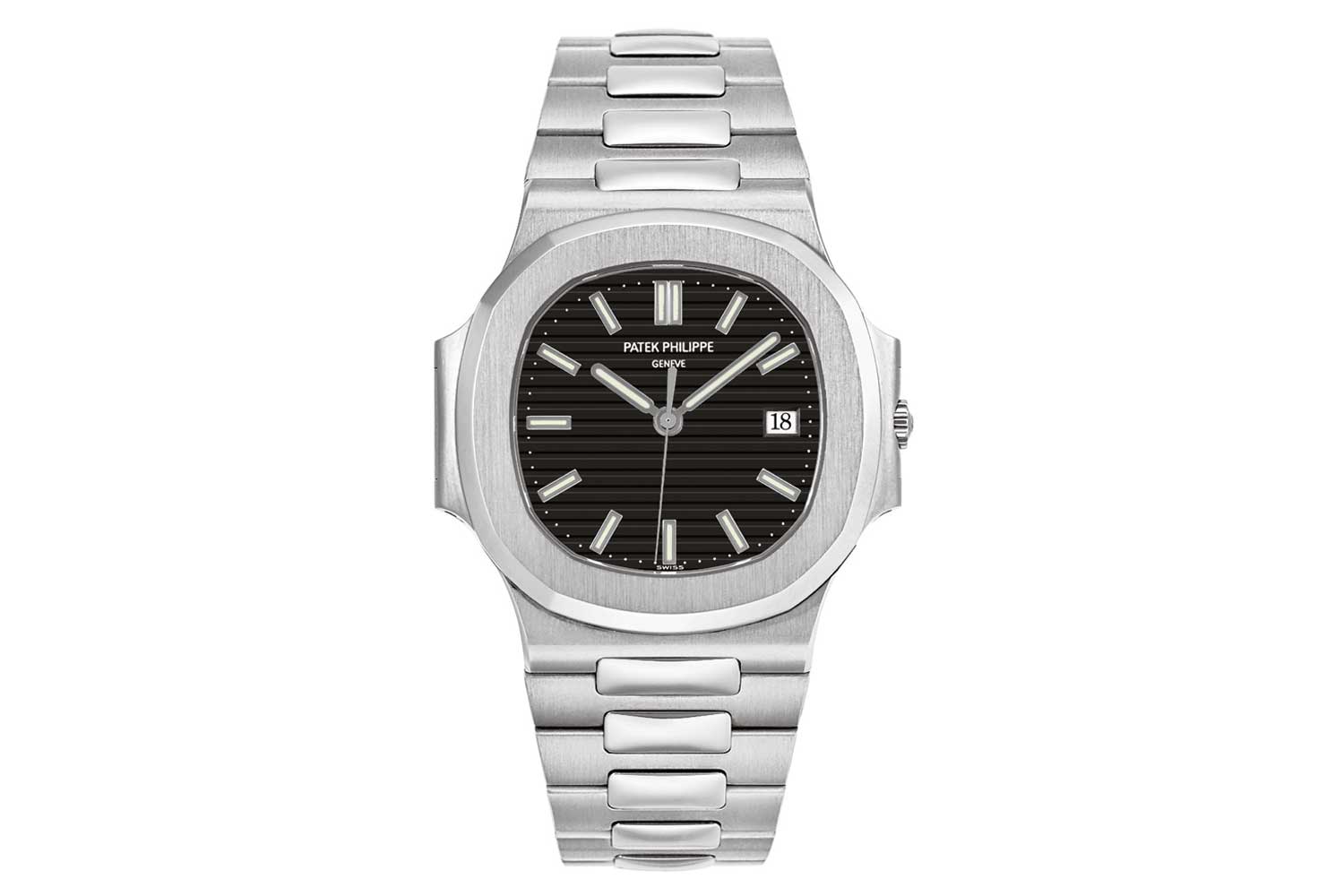
Patek Philippe Nautilus Ref. 3711/1G, 2004
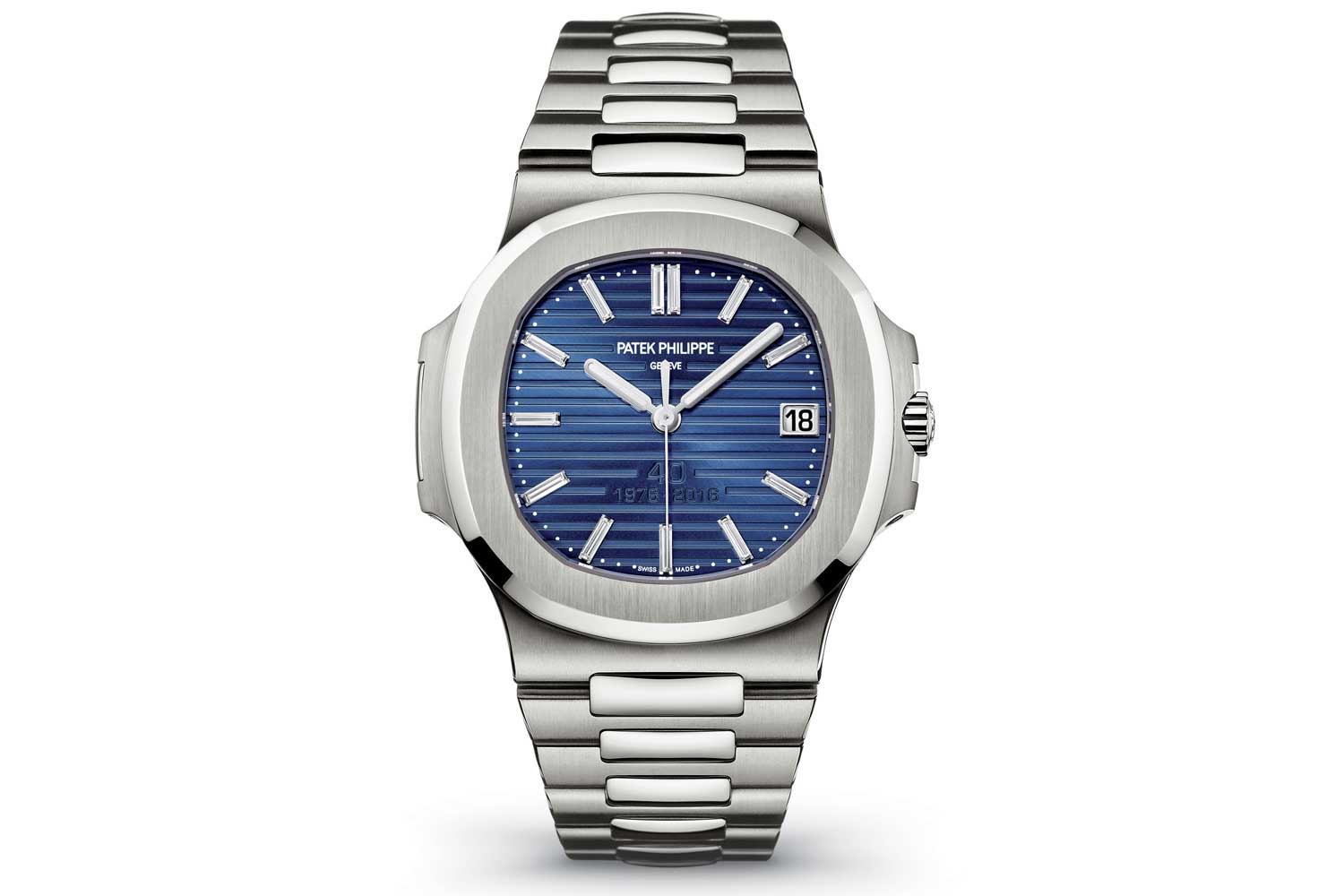
Patek Philippe Nautilus Ref. 5711/1P, 2016
Measuring just 2.53mm high, the cal. 240 was conceived in the thick of the Quartz Crisis with the intention of demonstrating an elegance in engineering that could eclipse the precision of quartz. To maintain its height, the rotor had to be made from solid 22k gold to ensure sufficient inertia. As with a majority of Patek Philippe movements, the rotor winds unidirectionally to eliminate the need for reverser gears, thus reducing friction. Notably, the ref. 3712 had an integrated sapphire case back, which marked a return of the monobloc case while suitably allowing the cal. 240 to be admired.
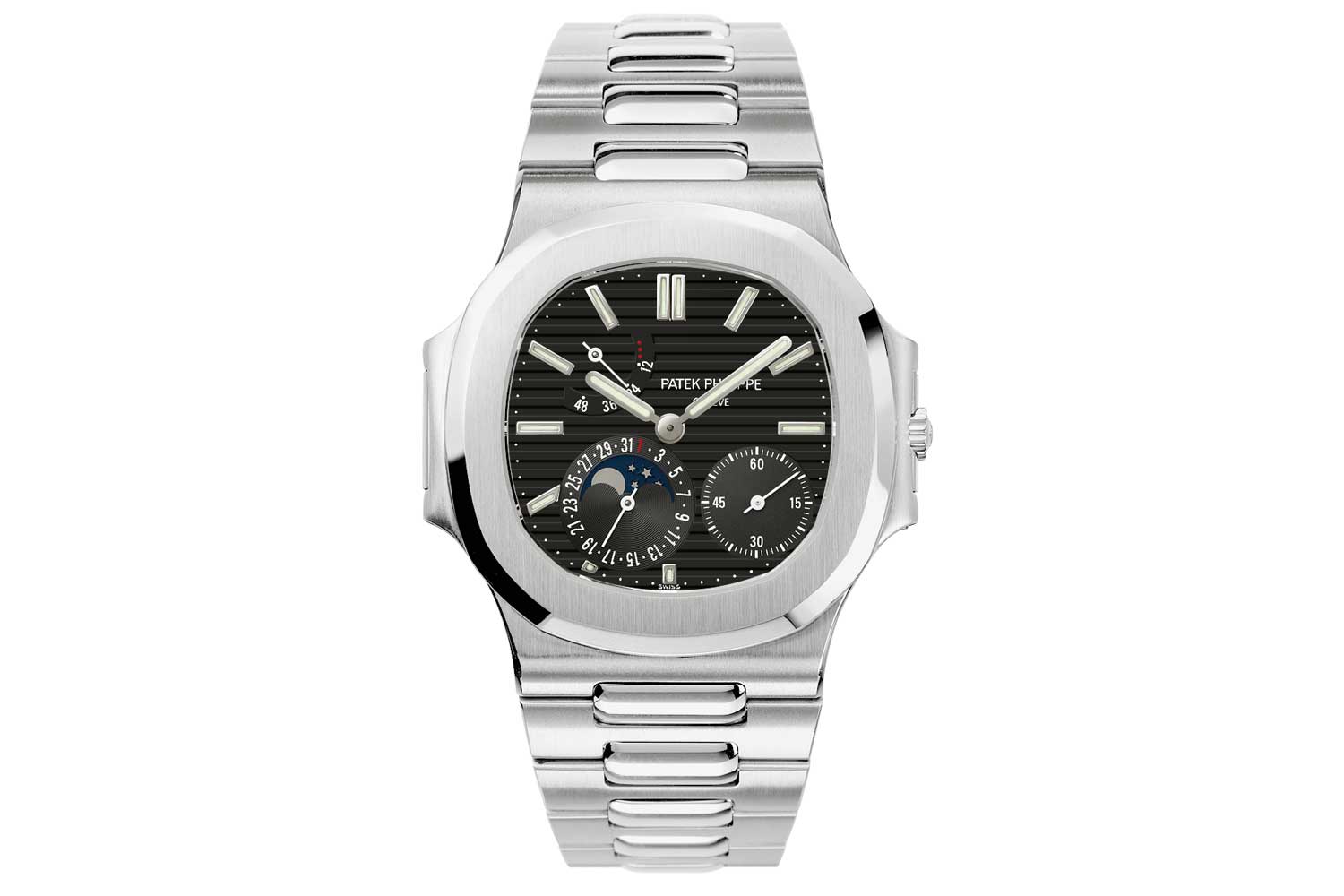
Patek Philippe Nautilus Ref. 3712/1A, 2005
The ref. 3711G, from circa 2003, last sold for 1,827,000 HKD, approximately CHF 218,200, at Sotheby’s in October, 2021 while a double-sealed ref. 3712A last fetched a sum of CHF 315,000 at Phillips Geneva auction in May 2022.
The Modern Icon: Ref. 5711 (2006-2021)
To commemorate the 30th anniversary of the Nautilus in 2006, Patek Philippe brought back the steel “Jumbo”, unveiling what has now become the hottest watch on the planet – the ref. 5711. It incorporated subtle refinements that set it apart from the original ref. 3700 but still retained the path-breaking codes that gave the Nautilus its notoriety. It was slightly wider than its predecessor, measuring 42.5mm from ear to ear.
Notably, the 5711 reverted to a three-part case construction with a classic six-notch sapphire screw back, as employed in the earlier ref. 3711. While the ref. 3712 demonstrated the possibility of an integrated sapphire case back, a three-part case ultimately offers greater convenience during servicing as the movement can be removed from the back without the need for a split stem. For this reason and due to the self-winding caliber 315 SC and subsequent 324 S C within being inherently thicker than the Jaeger-LeCoultre 920, the case measures 8.3mm thick versus the ref. 3700’s height of 7.6mm due to.
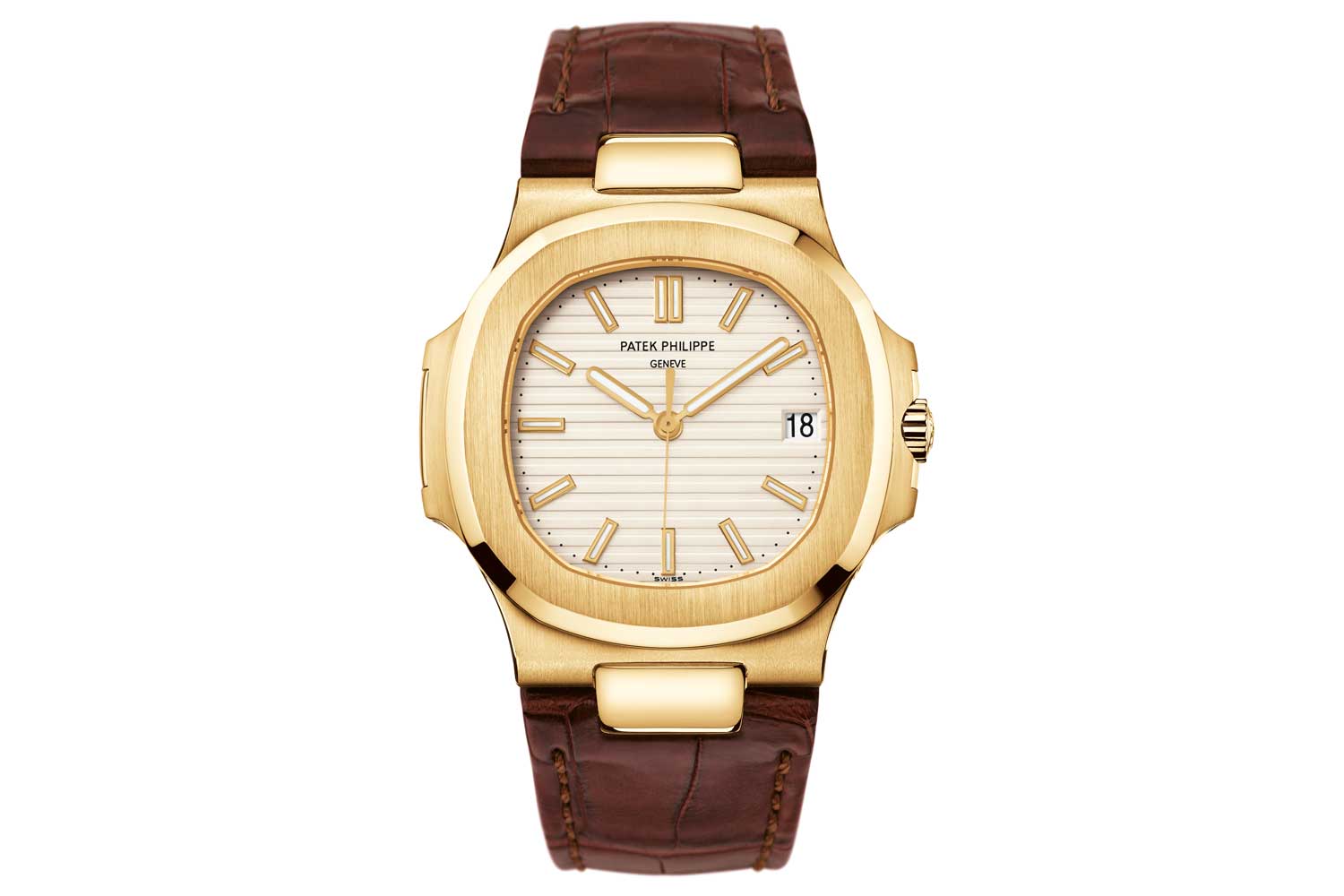
Patek Philippe Nautilus Ref. 5711/1J, 2007
The rounded baton hands were slightly broader, giving it a more assertive character while the shape of the hour indices followed the contour of the bezel instead of being uniform as they were in earlier models. The bracelet, with its alternating satin and mirror finishes, retained its interlocked H-links, but with a more streamlined profile and incorporated a double folding clasp.
The final evolution of the movement is the 26-330 SC in 2019 which saw the introduction of a hacking seconds function and notably, a nickel-phosphorous third wheel with a reactive tooth profile made using LIGA (the German acronym for Lithographie, Galvanoformung, Abformung), an additive micro-electro-mechanical technique that allows for extremely precise fabrication of metal parts. As with all central seconds calibers after the Jaeger-LeCoultre 920 in the Nautilus lineage, it is the third wheel that drives the pinion for the center seconds. The new sprung teeth allow for fuller penetration of teeth as they mesh, eliminating backlash or play.
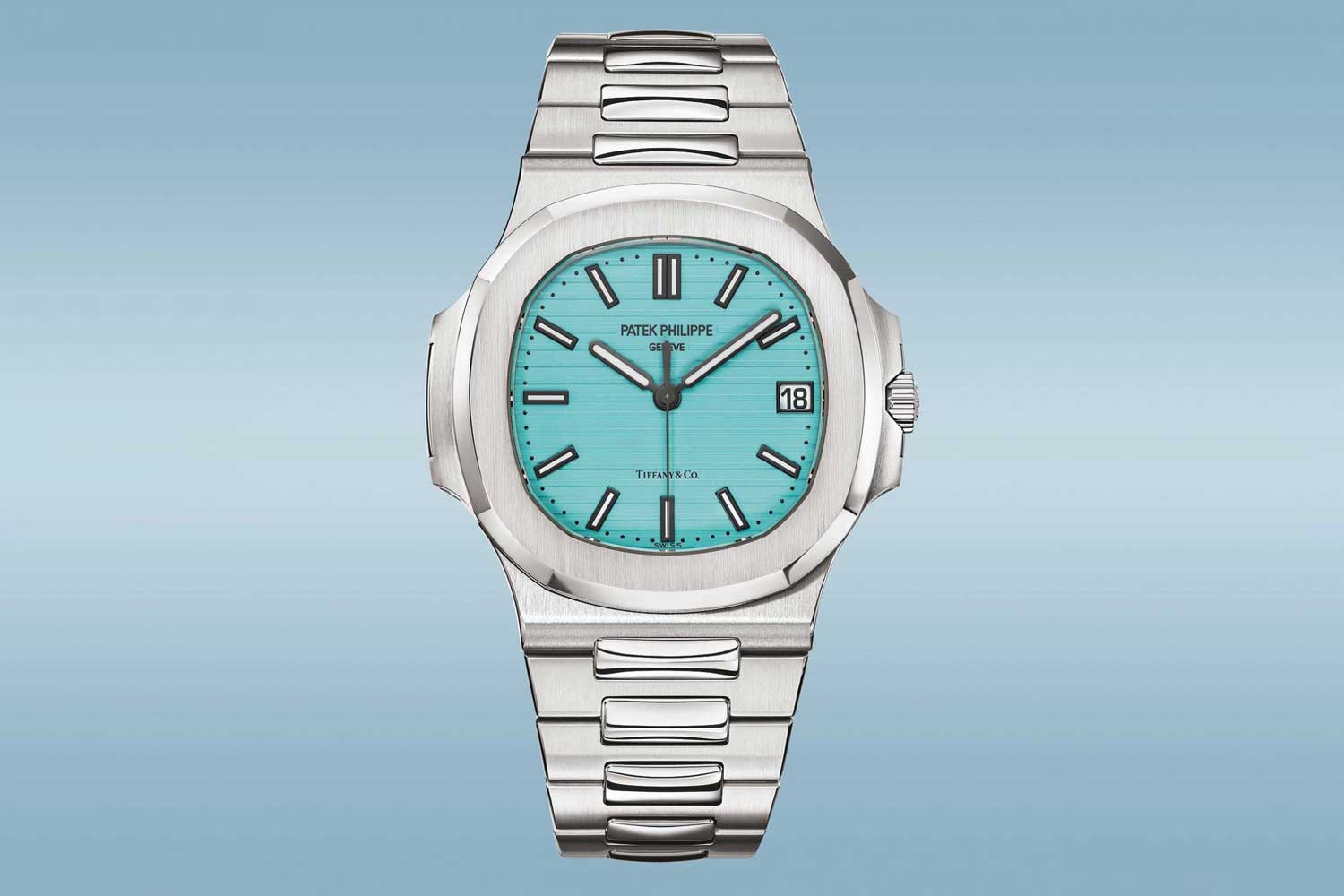
Patek Philippe Nautilus Ref. 5711/1A-018, 2021
Upon its discontinuation, prices skyrocketed on the secondary market. A double-sealed example with a green dial sold for EUR 416,000 at Antiquorum in July 2021, setting a record for the reference only to be broken within the same year when the final execution of the reference signed by its American retailer along with a matching Tiffany blue dial fetched a whopping US$6.504 million at Phillips New York auction in December 2021.
The Nautilus Moon Phase: Ref. 5712 (2006-present)
Along with launch of the ref. 5711 in 2006, Patek Philippe also unveiled the Ref. 5712. Displaying a date, power reserve and moon phases, the 5712 was the successor of the short-lived ref. 3712. It shares the same subtle improvements as the ref. 5711 from its three-part case to its slightly wider case diameter of 42.5 (ear to ear) to the gently curved ears and its blue gradient dial.
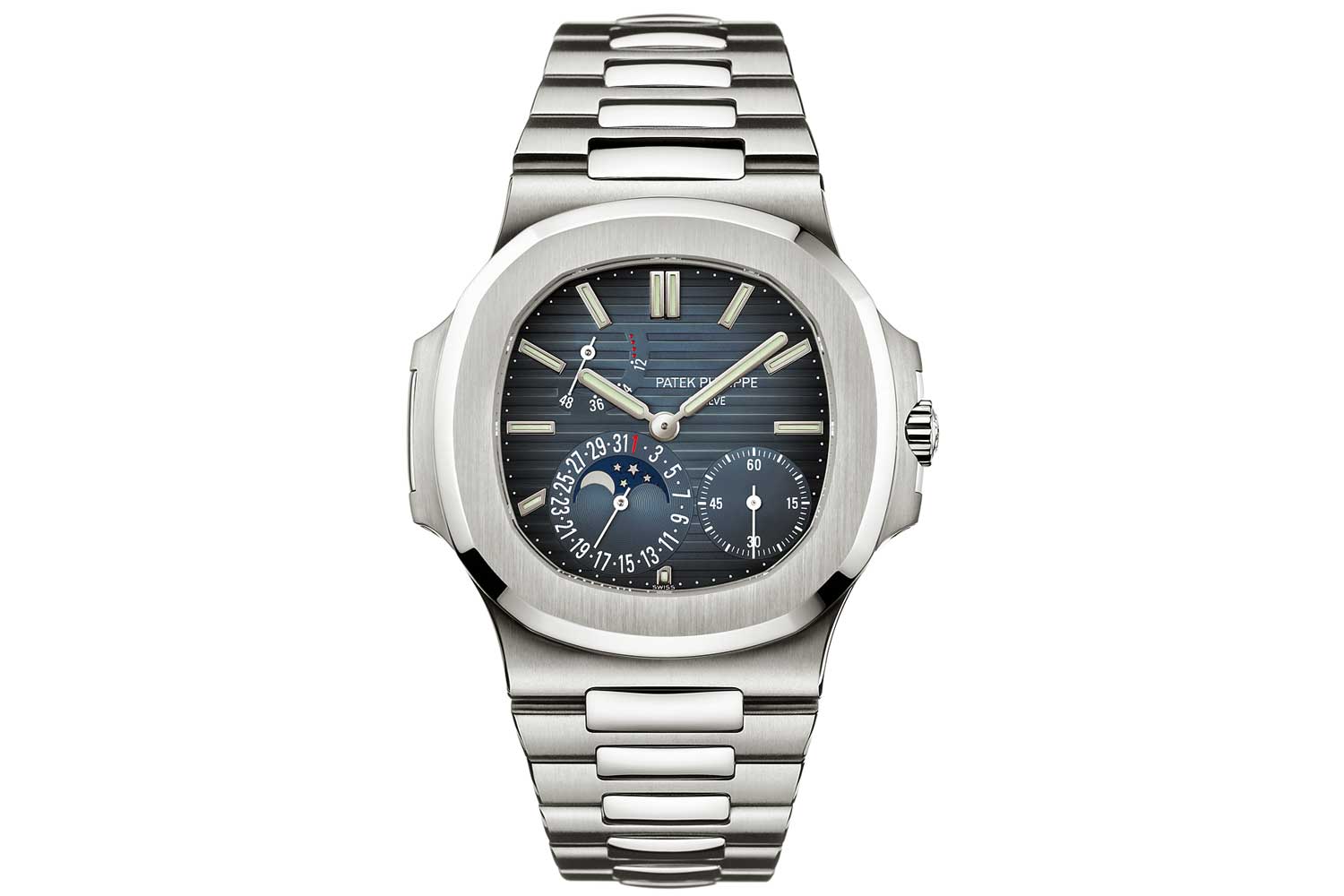
Patek Philippe Nautilus Ref. 5712/1A, 2006
The ref. 5712 was introduced in steel as well as in pink gold with a brown gradient dial that year. Notably, the pink gold model was the first Nautilus to be fitted with an integrated leather strap. It was subsequently produced in white gold as well as a bi-colour combination of white and rose gold. There is also a one-off ref. 5712 in titanium produced for the Only Watch charity auction In 2007, raising EUR 525,000. In march this year, a bimetal Tiffany-signed 5712GR sold for USD 201,600 at Christie’s.
The Nautilus Chronograph: Ref. 5980 (2006-present)
The year 2006 also saw the introduction of the ref. 5980A, which was the first Nautilus chronograph as well as Patek’s first-ever automatic chronograph. It has a case diameter of 40.2mm when measured from 10 to four o’clock and a height of 12.6mm. While it uses a three-part case like the ref. 5711, the case back features lateral protrusions that are secured to the case middle along with the bezel by four lateral screws at the ears.
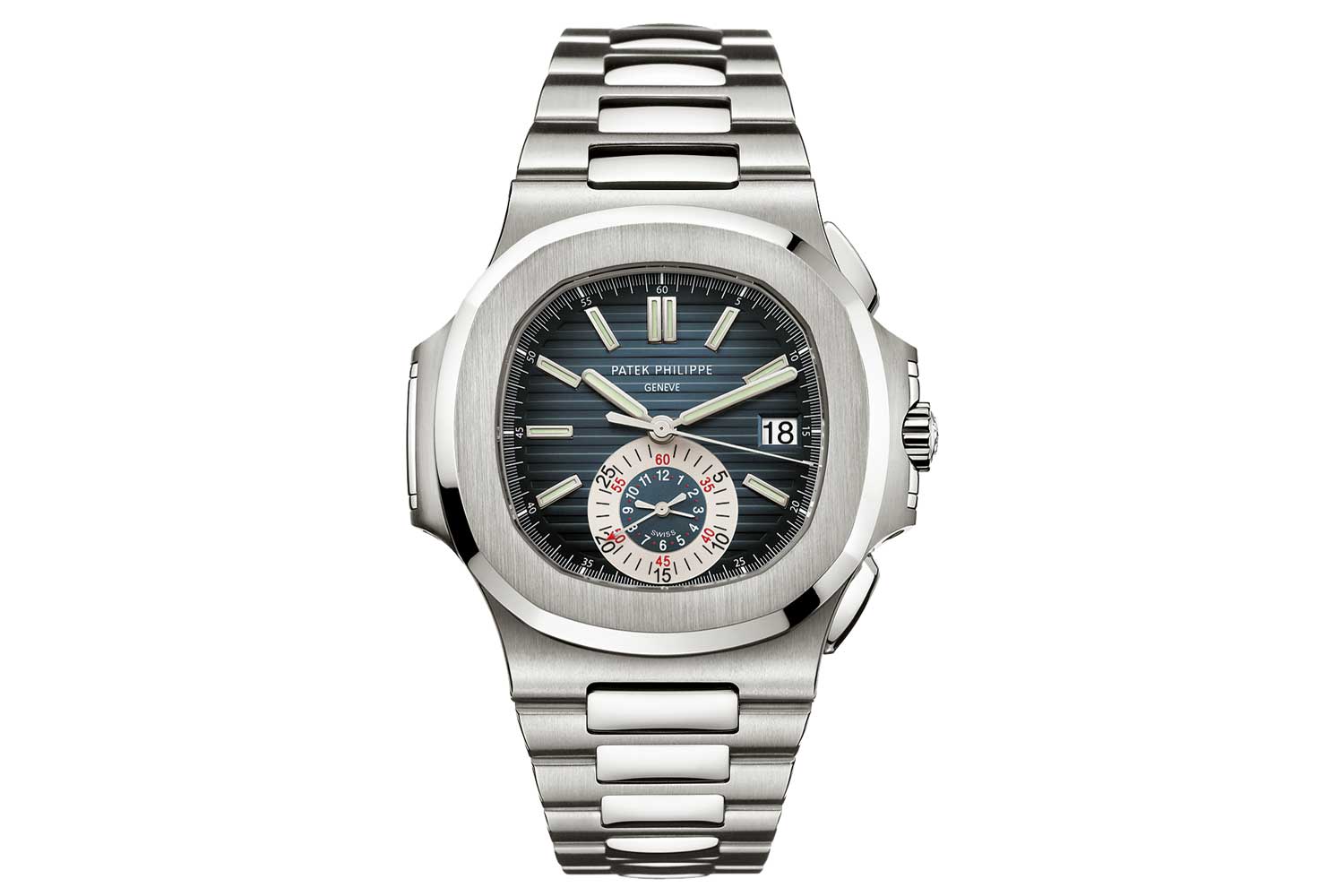
Patek Philippe Nautilus Ref. 5980/1A, 2006
Most notably, such a design allows the fourth wheel to be integrated in the vertical clutch assembly in the middle, and because there is no running seconds counter, no additional gears are needed to relocate the seconds to a sub-dial. This gear train configuration is the most ideal as it realises the true merits of a vertical coupling system, allowing the chronograph to function at its best with negligible effect on amplitude as the clutch and chronograph seconds wheel are within the power flow of the gear train, making it particularly suited for such a dial design. It enables the use of the chronograph seconds as an active running seconds with no amplitude loss while minimizing wear as both the fourth wheel and chronograph seconds wheel rotate in tandem. And like the 324 S C, the third wheel of the movement drives the motion works directly on the dial side. The caliber 28-520 C has a frequency of 3Hz and a power reserve of 45 and 55 hours.
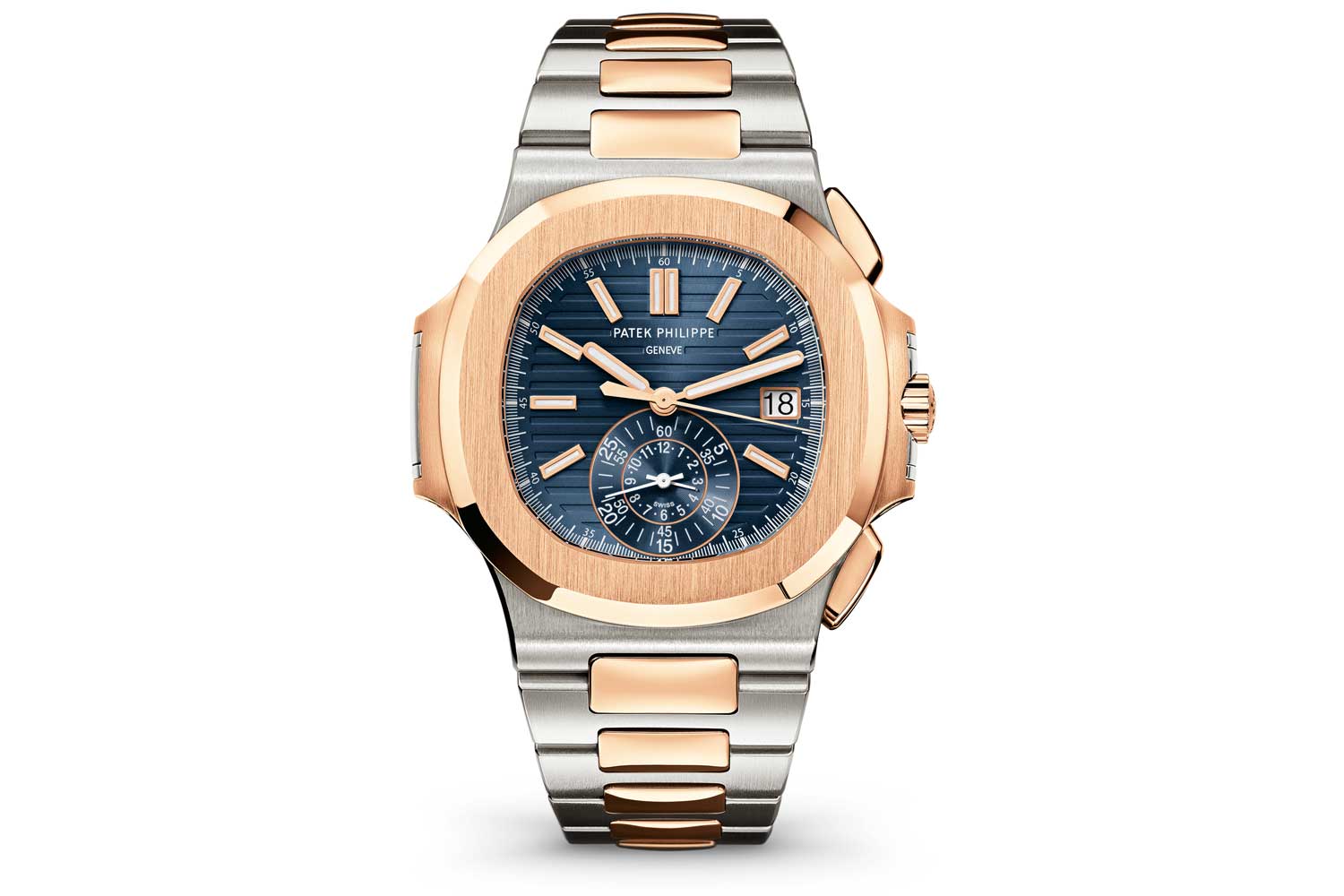
Patek Philippe Nautilus Ref. 5980/1AR, 2013
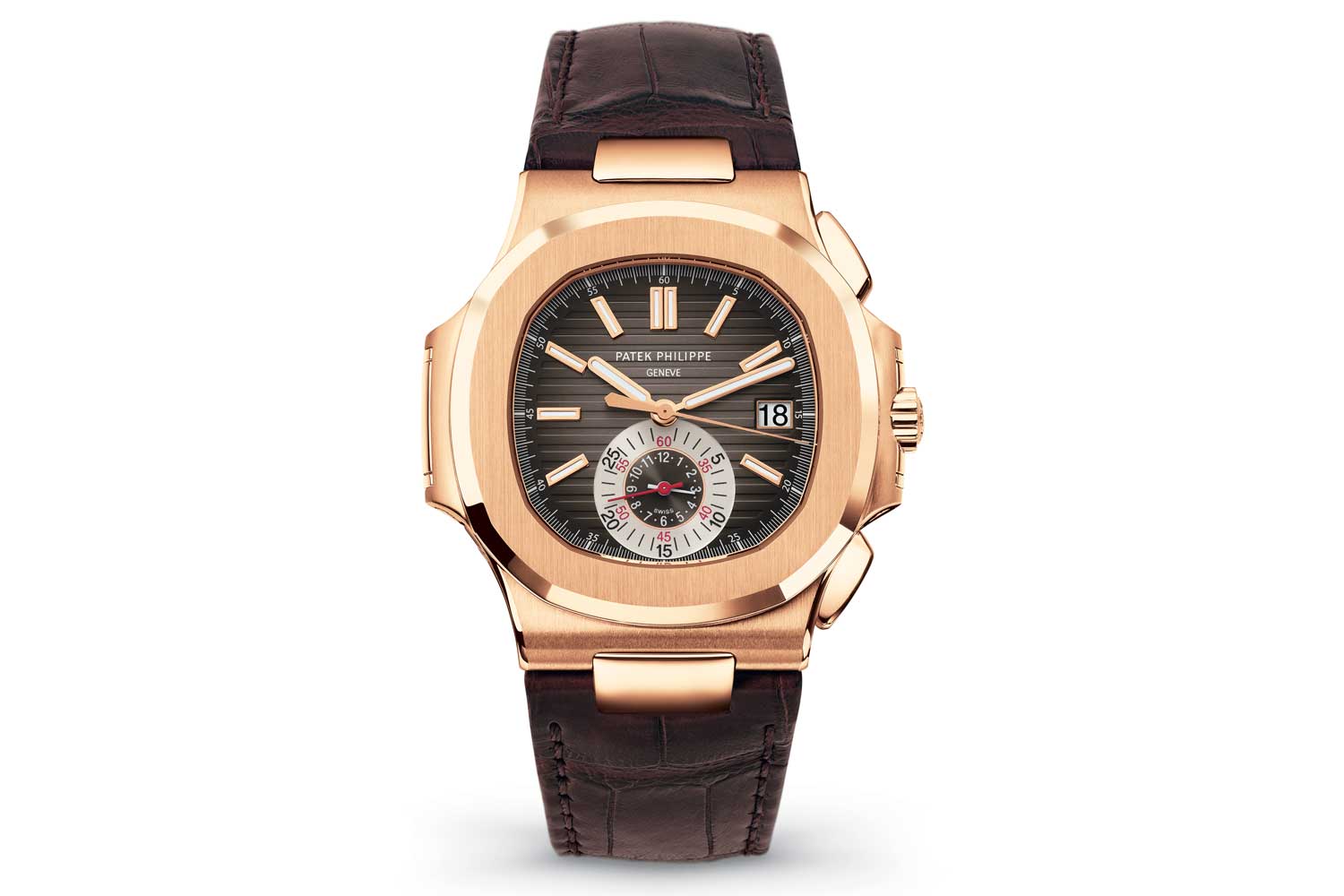
Patek Philippe Nautilus Ref. 5980R, 2010
A ref. 5980A, from circa 2012, with a white dial last sold for HKD 945,000, approximately CHF 121,138, at Sotheby’s in October 2022.
The Midsize Underdog: Ref. 5800 (2006-2009)
As the ref. 5711, the chronograph ref. 5980, and the moon phase ref. 5712 took the lion’s share of attention in 2006, the midsize ref. 5800, launched as a successor to the hugely popular ref. 3800 that same year, was often overlooked. Measuring slightly larger than its predecessor at 38.5mm wide from 10 to four, it bore all the same upgrades in terms of the design, including gently rounded case ears and a blue gradient dial. However, the watch kept the cal. 330 SC with the Poinçon de Genève, most likely to finish off the stock, and also featured a monobloc case with an integrated sapphire crystal case back, first seen in the ref. 3712. As the market was experiencing a trend towards larger case sizes, the model failed to catch on, leading to its eventual discontinuation in 2009.
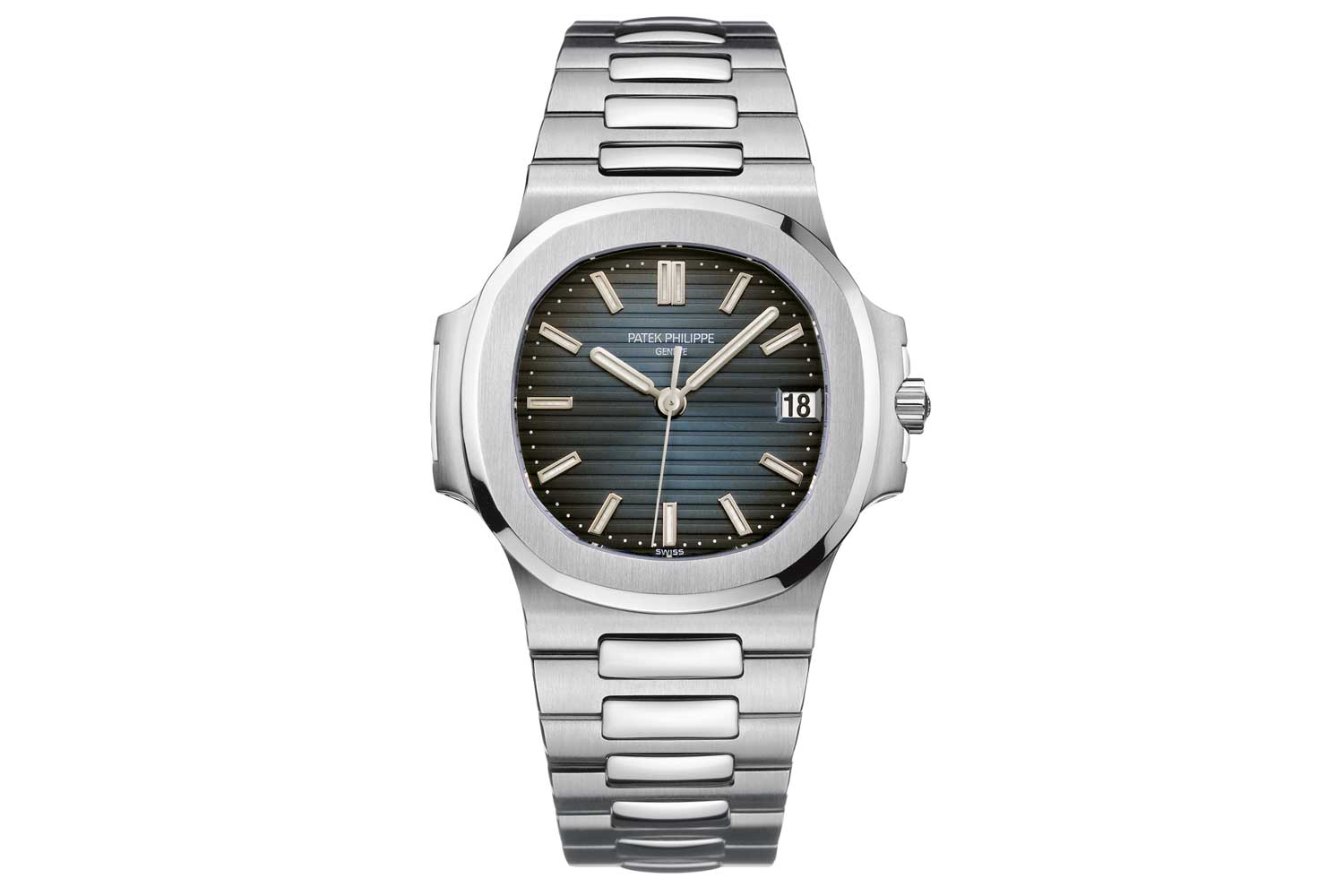
Patek Philippe Nautilus Ref. 5800/1A, 2006
The Nautilus Annual Calendar: Ref. 5726 (2010-present)
In 2010, Patek Philippe unveiled the ref. 5726, a Nautilus that houses one of the brand’s most emblematic complications – the annual calendar. When it was first unveiled in 1996 in the ref. 5035, Patek’s annual calendar mechanism was a tremendous feat in its day not only for the novelty of the complication but also its construction as it marked a departure from the complex, three-dimensional architecture of a traditional perpetual calendar, characterized by a grand lever and rockers. Instead, it relied on gears and pinion, making it highly robust and reliable.
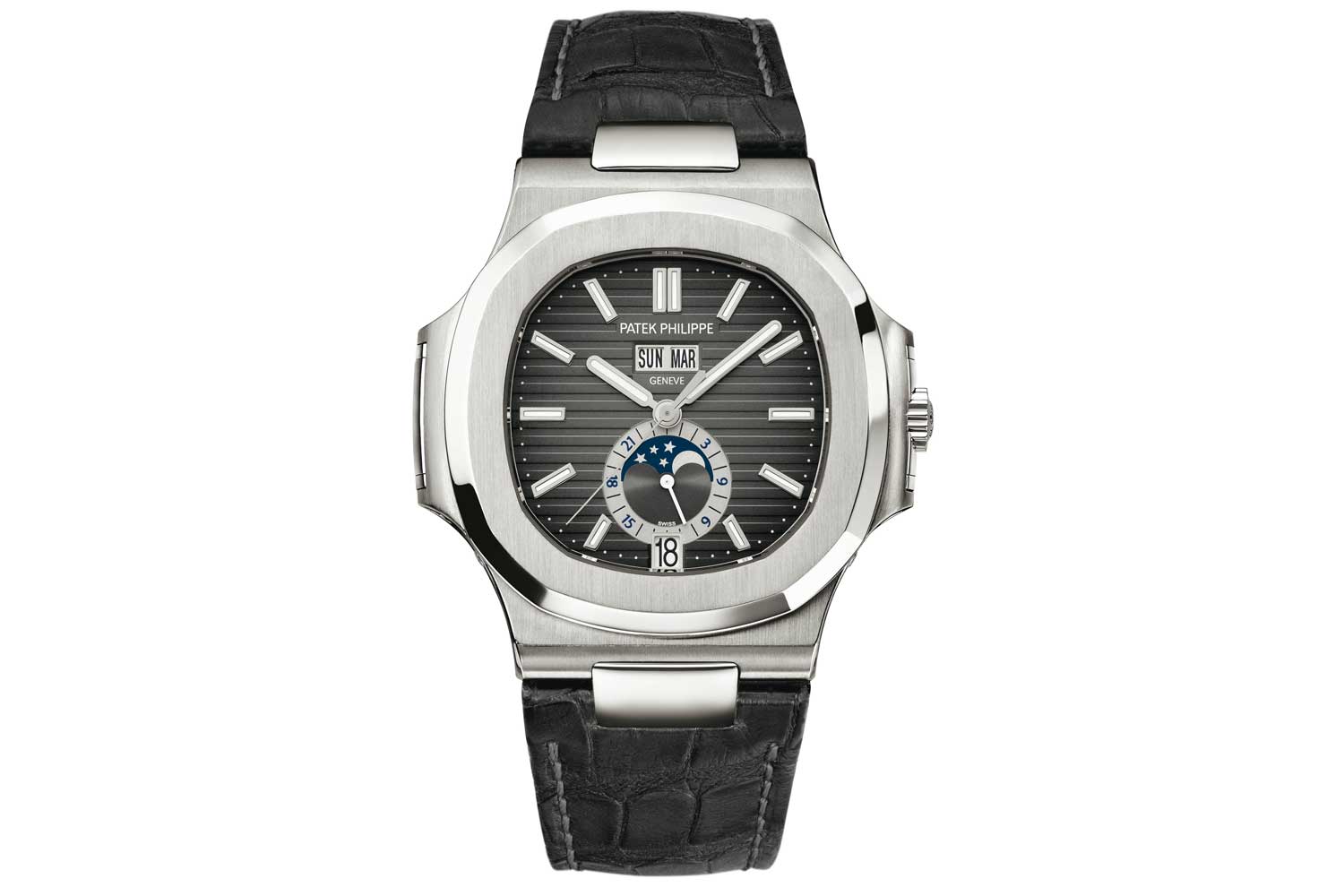
Patek Philippe Nautilus Ref. 5726A, 2010
This reference was only ever offered in steel, initially with a dark grey gradient dial and an integrated leather strap and subsequently with an integrated steel bracelet in 2012. A white-dial model was also introduced in 2012 and eventually a classic blue gradient dial in 2019.
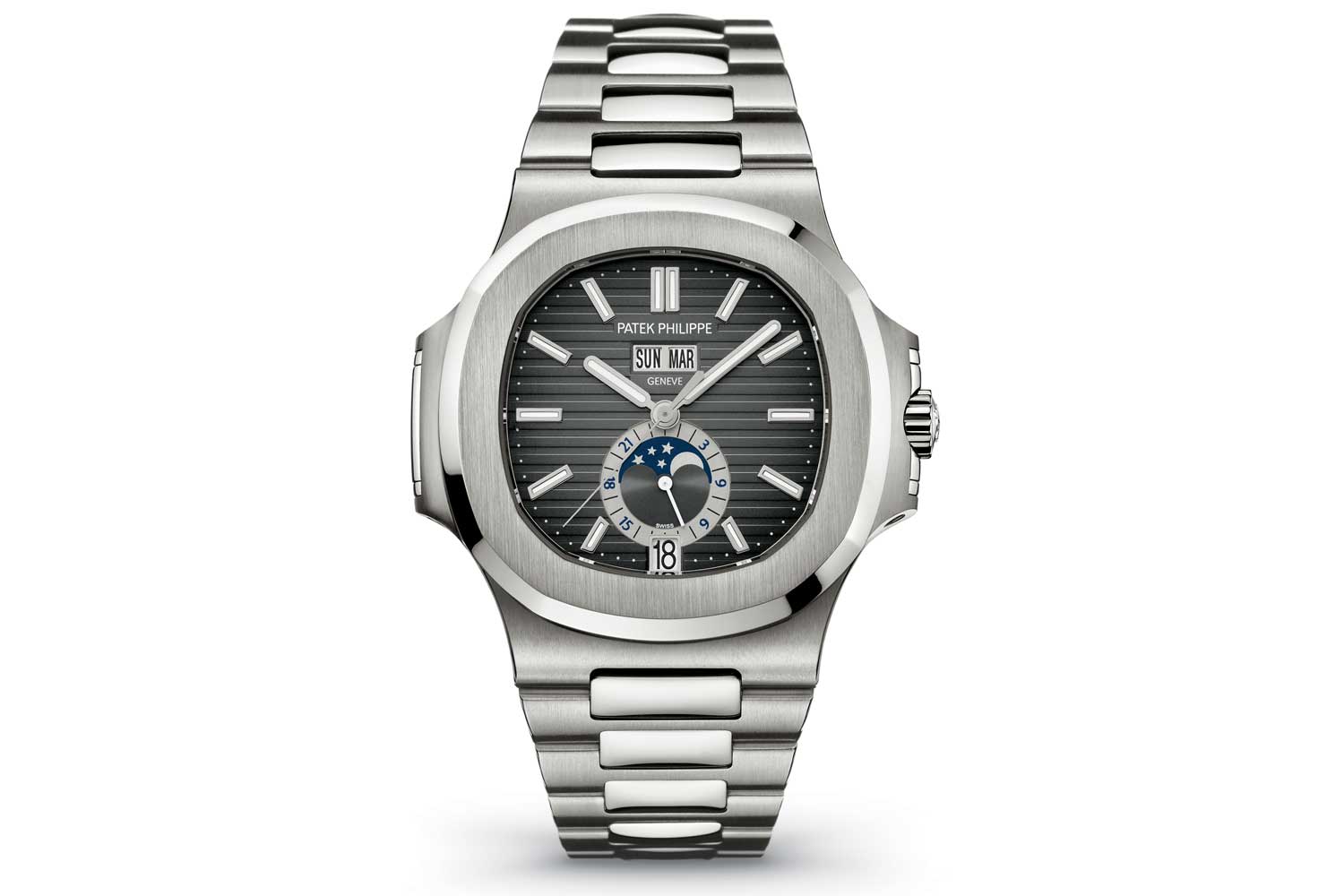
Patek Philippe Nautilus Ref. 5726A, 2012
The Nautilus Travel Time Chronograph: Ref. 5990 (2014-present)
In 2014, Patek Philippe unveiled the Travel Time Chronograph ref. 5990A that was to replace the chronograph 5980A. It combined two highly practical complications – a flyback chronograph and dual time function, along with an analogue date, synchronized to local time. But beyond its utility, the ref. 5990 represents one of the most outstanding references in the Nautilus line up where the aesthetics and mechanics of the complications were masterfully melded into Genta’s iconic design.
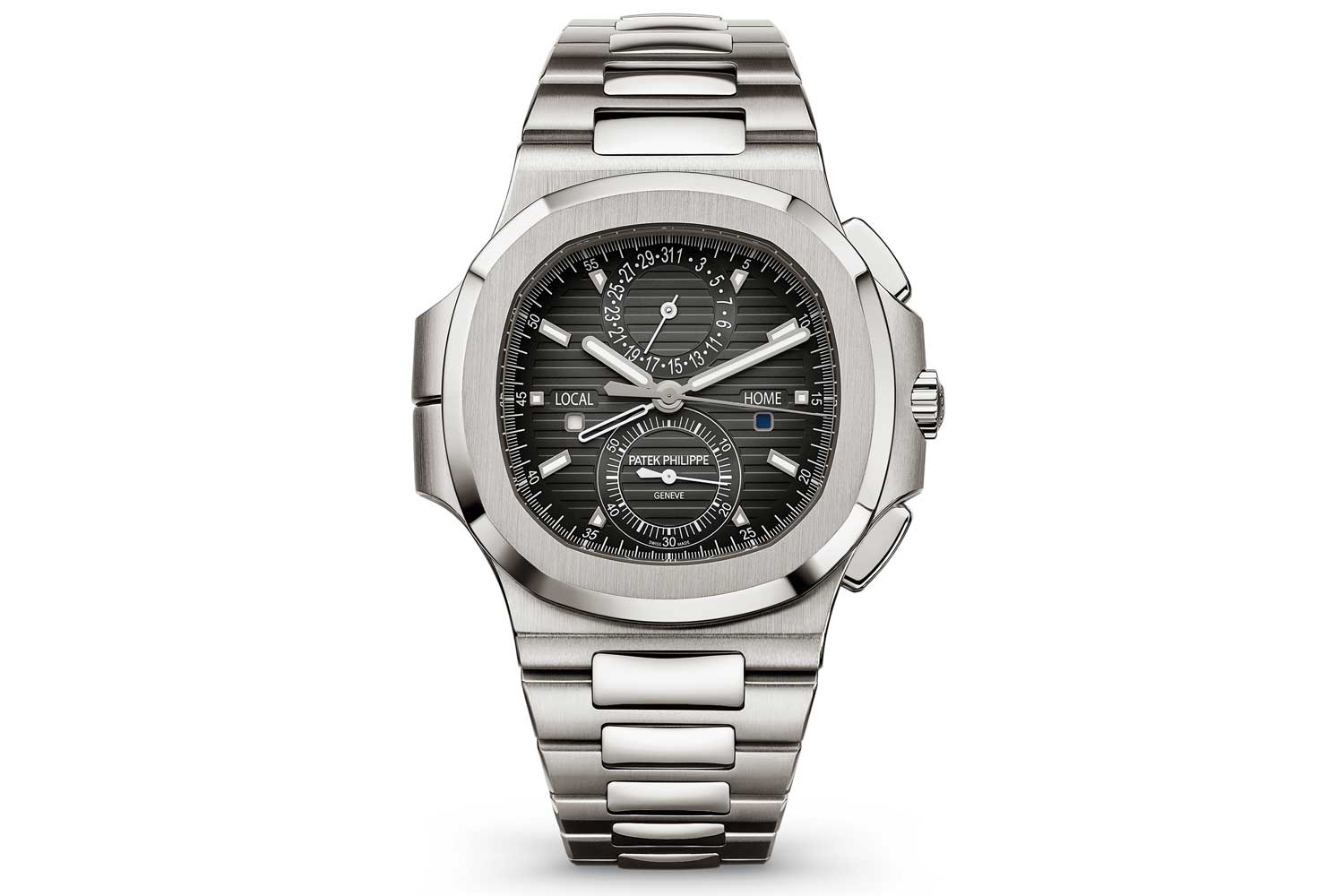
Patek Philippe Nautilus Ref. 5990/1A, 2014
The chronograph pushers at two and four on the case were shifted closer to the crown to make way for a date corrector at one o’clock on the case band while the pushers for the time zone correctors were cleverly disguised as its nine o’clock “ear”.
The date display, which was originally an aperture date at three o’clock in the ref. 5980, was relocated to 12 o’clock as an analogue date, while the 60-minute chronograph counter remained at six o’clock but did away with the hours, resulting in a remarkably balanced dial. Notably, with the addition of a dual time mechanism, the cal. CH 28-520 C FUS gained just 0.3 mm in thickness, in part because the Breguet overcoil hairspring was replaced by a Spiromax hairspring, which oscillates on a single plane yet symmetrically and isochronously.
Measuring 40.5 mm in diameter from 10 to four o’clock, the Ref. 5990 has been executed in only two versions to date – stainless steel with a black gradient dial and rose gold with a blue gradient dial. The ref. 5990A, from circa 2015, last sold for EUR 126,000, approximately CHF 120,100 at Sotheby’s in September this year.
The Nautilus Perpetual Calendar: Ref. 5740 (2018-present)
By 2018, demand for the Nautilus had reached a fever pitch. Along with introducing a price hike on all steel models that year, Patek Philippe also unveiled the ref. 5740G, which added the perpetual calendar – the brand’s most prized complication – to the Nautilus.
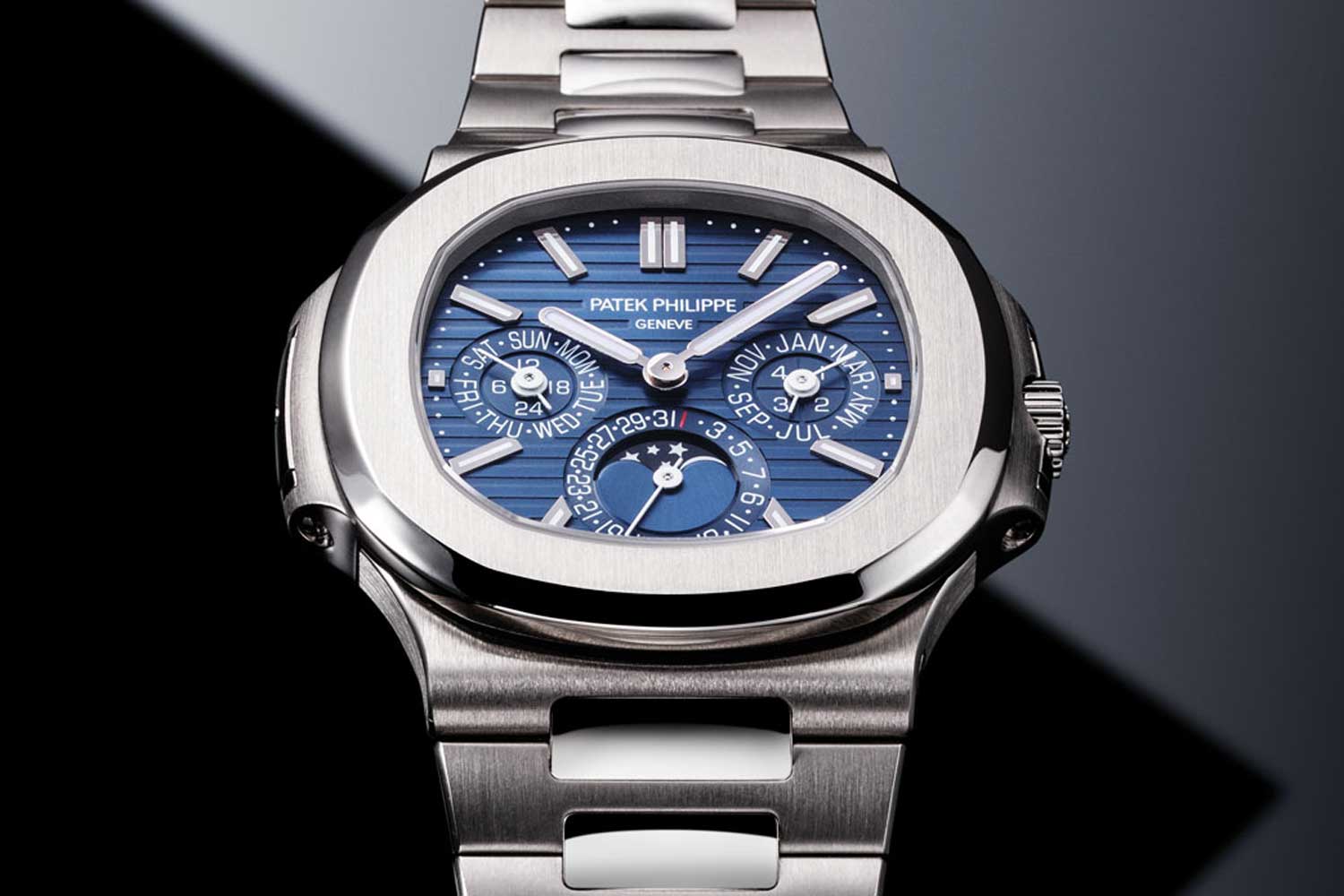
Patek Philippe Nautilus Perpetual Calendar 5740/1G, 2018
While it uses a three-part case, the case back, like the chronograph ref. 5980 and annual calendar ref. 5726, features lateral protrusions that are secured to the case middle along with the bezel by lateral screws at the ears. It measures 40mm in diameter from 10 to four o’clock and pairs a white gold case with a classic blue dial.
A ref. 5740, from circa 2020, last sold for HKD 2,016,000, approximately CHF 253,200, at Sotheby’s on 5th October, 2022.










